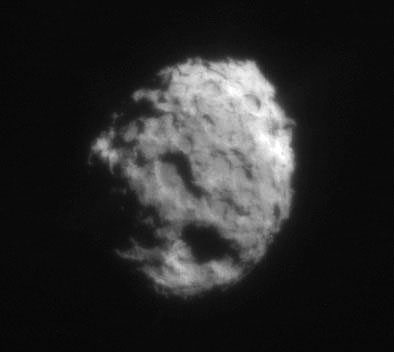
Many comets originate in the Kuiper belt, a vast expanse of space extending beyond Neptune’s orbit. There, icy remnants from the formation of the solar system coalesce into comets, which are sometimes referred to as ‘dirty snowballs’. It has been presumed that comets never get warm enough to contain liquid water in their interiors. Data from NASA’s Stardust mission implies that that assumption may be wrong.
In 2004, the Stardust spacecraft approached the comet Wild-2, grabbed some molecules from its surface, and sent those particles down to Earth for analysis. The capsule containing those particles landed in 2006. Upon examination, researchers led by Eve Berger and Dante Lauretta of the University of Arizona found traces of minerals that form in the presence of liquid water.
In addition, the scientists found a rare mineral called cubanite in a variety that only exists below the boiling point of water. This set an upper limit to the temperatures that Wild-2 could have experienced. Knowing that the comet has stayed within the temperature range of liquid water has implications for the way comets form.
No comments:
Post a Comment